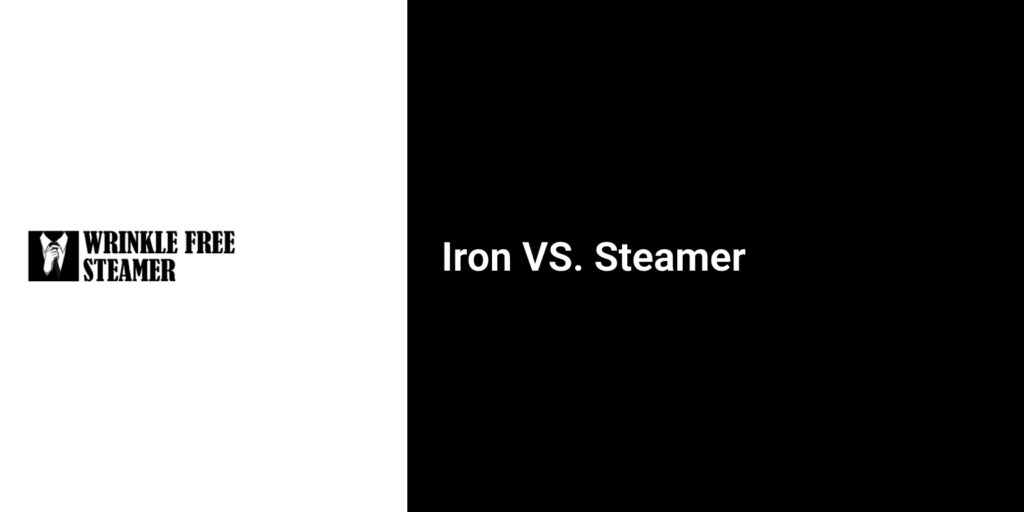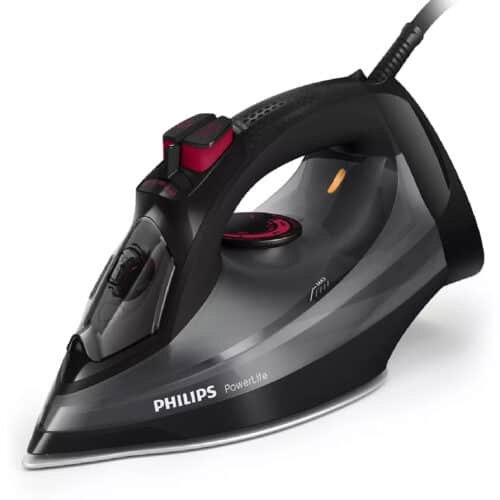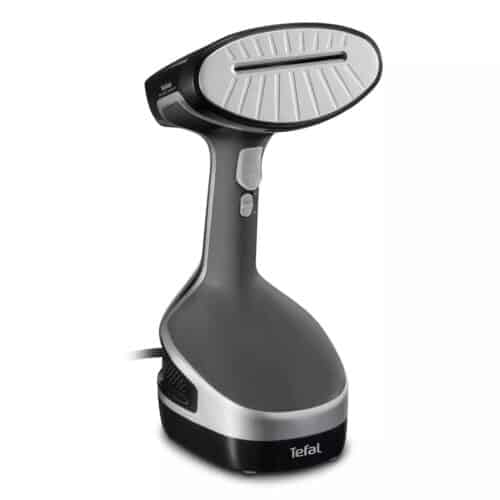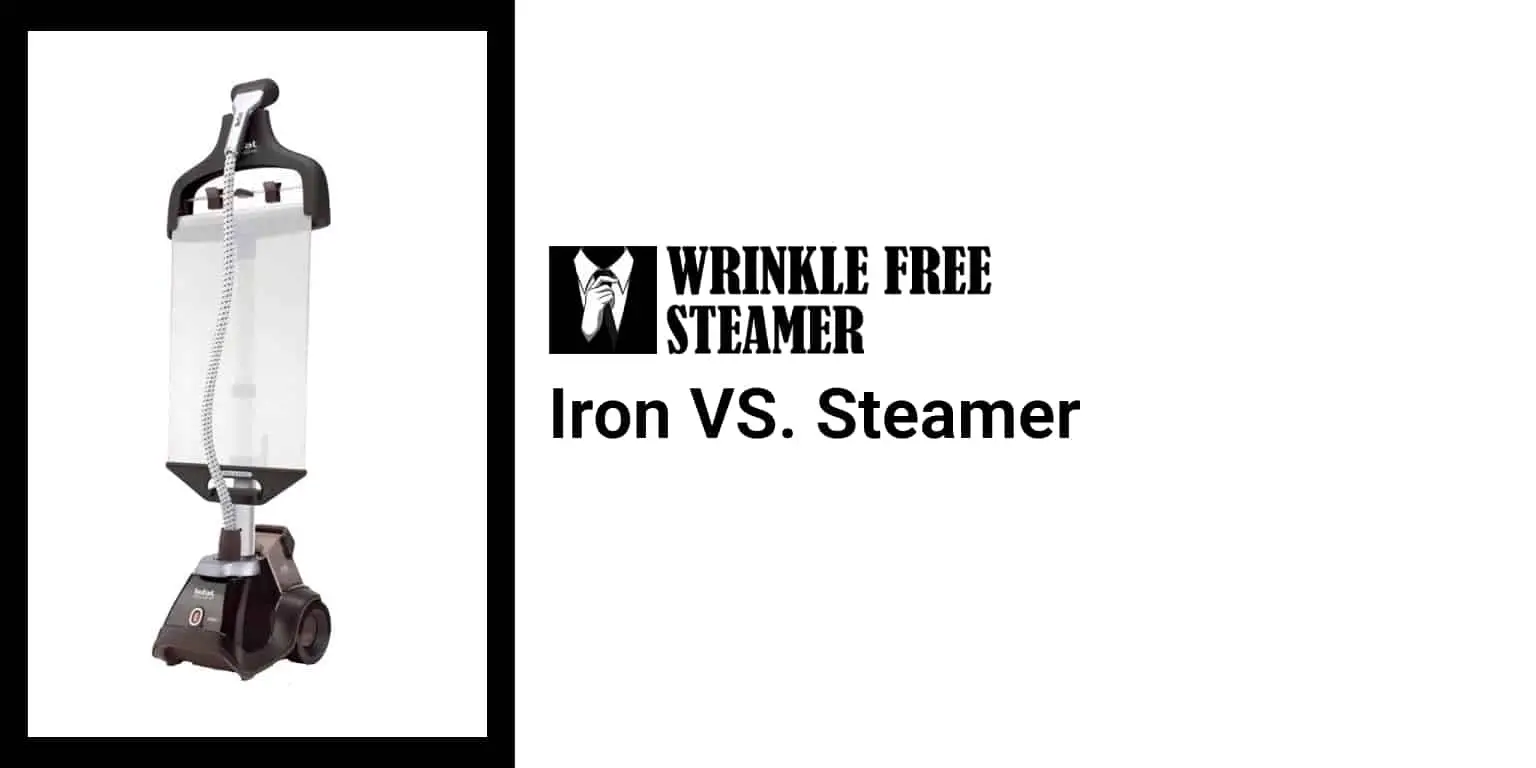As an Amazon Associate we earn from qualifying purchases.
The clothes steamer and iron are practically doing the same thing: removing wrinkles from garments and fabric. While all can produce steam, there are significant variations in how the machines operate. The steamer emits a jet of moisture on the clothes without touching the fabric, while the iron presses the material flat under its hot plate. Steam iron works with both a hot plate and a blast of water or steam, releasing wrinkles.

Garment steamers and irons both do a decent job of eliminating wrinkles from the cloth, and hand-held steamers cost around the same as irons sold in big-box shops. However, the floor models of huge tanks and standing clothes hangers cost significantly more.

How Ironing Works
Ironing clothes for a sharp, brushed look has been in use since Fred Flintstone began riding mammoths for the first time.
In those days, if anybody wanted to iron their clothing, they would fill their irons with hot coals or heat it on the top of the stove until it was wet. You fill your iron with water today, plug it in, and set it to your ideal temperature.
Ironing uses a hot flat metal plate to smooth away the wrinkles in the clothing. It would help if you had an ironing board – a product that has produced more bruised shine and general annoyance than any other technology in human history.
How To Make The Best Out of Ironing
Ironing does take a little practice to do well, and it might take a small trial and error as well. You want your final product to be neat because you don’t want to scorch your cloth, and it will help you with these tips.
The number of holes: Different irons have different types of holes in the rim. These holes cause steam to escape so that your clothes are ironed and steamed at the same time. Try to look for an iron with more holes if that’s possible.
Start with the lower temperature: Whether you’re going to iron for the first time, or if you’re not sure what weather your clothing wants, start lower. You can still work your way up to higher temperatures steadily if you need it.
Weather: The temperature you set your iron needs to match the kind of cloth you like to iron. Cotton and linen fabrics are more forgiving, and you should use higher temperature settings. Things like silk or nylon, however, require lower temperatures.
Steam cloth buffer: Spray your clothes gently with water before ironing, or you may put a moist cloth between the iron and your garments. It helps you smooth out those stubborn wrinkles.
Pros of Ironing
Simple control: With your iron, you can control almost the same settings you use.
Easy to use: You can add water to your iron, adjust the temperature, and use it. It’s mostly straight.
Multi-use: You can use iron-on virtually any cloth without having to think about destroying it.
Cons of Ironing
Learning curve: It takes a while to realize which fabrics need temperature settings.
Fire risks: If you leave your iron unattended, you can fire your clothes.
Possibility of scorching: It’s effortless to scorch your clothes when you learn to work with iron. If you walk out and leave it on your clothes, you may as well throw it away.

How Steaming Works
While it’s only starting to get very well-known, clothing steaming has been around for decades. It’s a gentler way to keep the wrinkles out of your clothes and keep them looking neat. Steaming your laundry also tends to eliminate any germs that might be on your clothes, and it may help to erase any unwanted odors.
A clothes steamer doesn’t need to be in close touch with the clothes like an iron. It would be best to keep the steamer’s nozzle (which comes out of steam) a few inches apart. The hot steam will strip any wrinkles out of the cloth and leave you with a clean, even finish.
You start the process by hanging your clothes up (often on the back of the door) and preheating the steamer. When you’re ready to go, keep it a few inches away from your clothing and use it in a downward motion.
How To Make The Best Out of Steaming
Before you start steaming your garments, there are a few items you’ll want to do to make sure you have neat, pressed, and wrinkle-free clothing by the end of the steaming process.
Check a small piece of cotton: Before you’re steaming all your clothes, consider a little bit of clothing. It will help you stop ruining the hue of your dress when you steam it.
Start with the seams: Your clothes’ steam is more robust than the other clothing. Start steaming along the seams and travel out slowly.
Don’t overdo it: If you overdo the steaming process, you may wear pieces of your clothes. You want to steam the clothes gently, then stop when the wrinkles are gone.
Work up: If you do a pair of jeans, start at the bottom. The hot steam is rising, softening the cloth above it and making it a little more straightforward, even if you’re not going to scold yourself for doing things this way.
Pros of Steaming
Easy alternative: Clothing steamers are a simple alternative to ironing. Steaming a dress takes only a while, where ironing can take up to 30 minutes to an hour.
Easy to use: With a clothes steamer, you’re going to hang your clothes, start the steamer, and steam the wrinkles. There’s not a lot of learning curve in that.
Multi-use: You’re not going to be as hampered by clothes as you might be with an iron. You will steam adorned clothes and larger clothes like curtains with ease.
Fewer efforts: It can be frustrating to steam a dress that doesn’t want to de-wrinkle. However, it’s nothing compared to all the preparation that comes with ironing boards, temperature settings, and all the other things that make ironing the worst way you could spend an hour.
Gentle: Although ironing crushes the fabrics under its brutal regime, clothing steamers gently caress them.
Cons of Steaming
Fabric constraints: Whether the fabric can’t withstand hot water, even if you steam it, you still risk damaging it with steam.
No sharp creases: A fabric steamer won’t give you sharp creases in your clothes as an iron can, which can be a downside.
Expense: The cost of a clothing steamer can be marginally higher than that of an iron. On the other side, you only have to buy the steamer on your own, although the iron even needs the ironing board.
When To Use An Iron & When To Use A Steamer
You may have all of these things at your disposal. You want to decide when it’s best to use one over the other, and you’re not able to pick one. It is all right, for all of them have weaknesses and advantages.
Ironing
If you’re struggling to get crisp lines in your jeans, you ought to use your iron. If you have specially tailored clothing, you might want to iron it by steaming it.
If you’re struggling to get the wrinkles out of your suit trousers or out of your short necklace clothes, the iron is what you want to use as it takes pressure to look neat and pressed.
Steaming
If you have a more fragile fabric to remove wrinkles, you may want to use a clothes steamer.
Fabrics like silk or polyester would fit best with a steamer so that the extra heat will destroy the silk. Polyester, too, can not stand up to ironing without diminishing.
Dressing steamers and irons are also valuable items. If you’re unsure which one you want to put on your clothing, you can still check the tags. They’re usually going to tell you just what you can and can’t do to clean and click.
Garment steamers are my choice because of their ease of use and how fast they are, but certain people swear by their irons. It would be best if you decided which one better fits your desires and your lifestyle.

